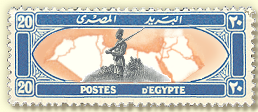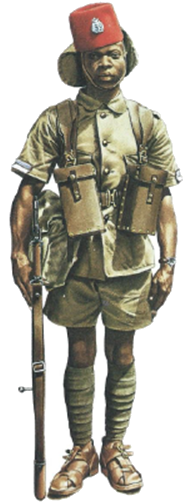

 The Force Publique in Africa, consisting of three brigades of infantry, was mobilised in the Belgian Congo to fight with the Allies in Africa. Governor-General Pierre Ryckmans and Lieutenant-General Paul Ermans, commander-in-chief, took part in discussions with the South African and British military missions in Leopoldville which resulted in some Belgians being sent to help in the East African Campaign in southern Abyssinia. The Congolese troops, under the direction of Major-General Auguste Gilliaert, Belgium's solidly built, 6ft general, were commanded by Lieut.-Colonel Leopold Bronkers Martens While the wartime expansion of the Force Publique was constrained by lack of European leadership on account of its racist policy of “whites” only officers, and only from occupied Belgium, three mobile brigades each comprising 6,000 soldiers and 4,000 porters were dispatched from the colony in January 1941. The brigade undertook a precarious route, transported by truck, railway and riverboat some 2,000 kilometres from Congo to Juba in South Sudan and then into western Ethiopia. During the Abyssinian Campaign, the Belgian forces in the Sudan were served by the Sudanese military postal services, and the military field hospital was served by the postal service of the army to which it was attached. In July 1942 a 13,000-strong Force Publique brigade was shipped to southwest Nigeria to prepare for an invasion of the adjacent Vichy French territory of Dahomey (today's Benin), but this was cancelled in November when the territory switched to Free French control. The force in Nigeria first used a double ring Military Post 1 or 4 (Fig. 9) cancellers and a bilingual Military Censorship / Belgian colonial troops. The office was installed in Ibadan and then in December in Lagos; it was closed in March 1943 As a result, the brigade was transported to the Middle East, being shipped around the Cape to Suez but because shipping in short supply 18 motorised columns, totalling 2,000 men in 850 trucks, undertook another mighty trek, driving 6,000 kilometres from Zaria in northern Nigeria through Chad and Sudan to Cairo. While the Congolese troops in Egypt were reorganised and re-equipped along British lines, a continued shortage of European personnel kept them out of the European and Burma campaigns. Beginning in June 1943, the Force Publique garrisoned the Suez Canal, where they guarded prisoner camps, roads and storage facilities. In April 1944 the brigade helped to suppress fighting between royalists and communists in an exiled Greek brigade. In May the Congolese were transferred to security duties in Palestine and were eventually sent home between September 1944 and January 1945.
|
|
|